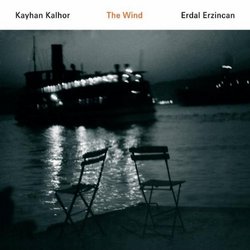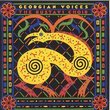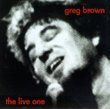| All Artists: Kayhan Kalhor Title: The Wind Members Wishing: 4 Total Copies: 0 Label: ECM Records Original Release Date: 1/1/2006 Re-Release Date: 9/19/2006 Genres: Folk, International Music, Pop Styles: Traditional Folk, Middle East, Iran Number of Discs: 1 SwapaCD Credits: 1 UPCs: 602498563540, 0602498563540 |
Search - Kayhan Kalhor :: The Wind
 | Kayhan Kalhor The Wind Genres: Folk, International Music, Pop
In this follow-up to The Rain, his Grammy-nominated outing with the group Ghazal, the revered Iranian kamencheh (spike fiddle) virtuoso is back with another wonderful set of collaborators. This time, he is heard with Erdal... more » |
Larger Image |
CD DetailsSynopsis
Amazon.com In this follow-up to The Rain, his Grammy-nominated outing with the group Ghazal, the revered Iranian kamencheh (spike fiddle) virtuoso is back with another wonderful set of collaborators. This time, he is heard with Erdal Erzincan, master of the Turkish baglama (or saz), which resembles a long-necked oud but has a more earthy, plangent sound, accompanied by Ulas Özdemir on bass baglama. This first-ever recording of these two giants performing together is the result of extensive research, during which Mr. Kalhor made several visits over many years to Istanbul with Mr. Özdemir, who is also a noted musicologist, serving as his guide and translator. Once he encountered Mr. Erzincan, who is widely considered to be the finest living exponent of the ancient Anatolian tradition, they started searching for a common ground between their respective disciplines. This meant creating a bridge, over which the highly improvisational Persian sources and the more codified Turkish styles, which usually include vocals, could meet and flourish on their own terms. The resulting twelve instrumentals are fiercely inventive and gloriously played, as scratchy bowed and gutty plucked strings climb and dive, propelling one another to previously unimagined heights and depths. --Christina Roden Similarly Requested CDs
|
CD ReviewsModern Iranian spike fiddle for a meditative moment Jungyup Lee | Amherst, MA USA | 12/18/2007 (5 out of 5 stars) "I hear the "wind" from the bowed instrument with four strings. It takes different names and forms (two-four strings) across the vast continent called Asia. The middle east version of this instrument is believed to be originated from Kurdistan, now divided across Syria, Turkey, Iran and Iraq. It is called "kemanche" or "kemançe" in Kurdish and "kemençe" in Turkish. However, it is more famous as an Iranian and Azeri instrument with a similar name, "kamancheh" (meaning "little bow" in Persian) or kamança (in Azeri). The distinction between a Iranian /Kurdish "kamancheh"/"kemanche" and a Turkish "kemenche" is confusing to non-experts like me especially because I am provided different explanation here and there (it seems that the former is a kind of a long-neck spike fiddle and the latter is a more like a violin without a spike), but one sure thing is that they are related cousins (One very good explanation is provided here with lots of great kamancheh audio samples from Iran, Azerbaijan and Armenia). One of the most well-known (especially to the Western world) four-stringed kamancheh player today is Kayhan Kalhor, who was born in Iran of Kurdish descent but is now based in the US. While kamancheh has been important as the only bowed string instrument in Iranian classical music (as is exemplied by Ali Asghar Bahari's and Ali Akbar Shekarchi's playing), Kayhan's experiments expanded a modern horizon of the instrument. While playing as a member of Masters of Persian Music, he is tapping into a new soundscape by working with Indian sitar player Shujaat Husain Khan for a project called Ghazal and Turkish baglama (saz) player Erdal Erzincan for the latest album, The Wind (2006). Indeed, his international collaboration with various similar-minded musicians not only earned him fame in the world music circle, but made his music more accessible without compromising musical integrity. The album, The Wind is a great conversational improvisation between two Middle Eastern virtuoso musicians. If Erdal's baglama playing is a flowing water in the Black Sea, Kayhan's kamancheh is a blowing wind over the Iranian desert. Their one hour amazing performance is calm but intense; passionate but peaceful. Without any background of Iranian classical music, it provides a great meditative moment with repeated listening." Incredible music C. T. Wolfe | 04/21/2008 (5 out of 5 stars) "it's maybe not as amazing as K. Kalhor's earlier solo work but it's a stunning album nevertheless. Intelligent, delicate without being bland or light."
|

 Track Listings (12) - Disc #1
Track Listings (12) - Disc #1








